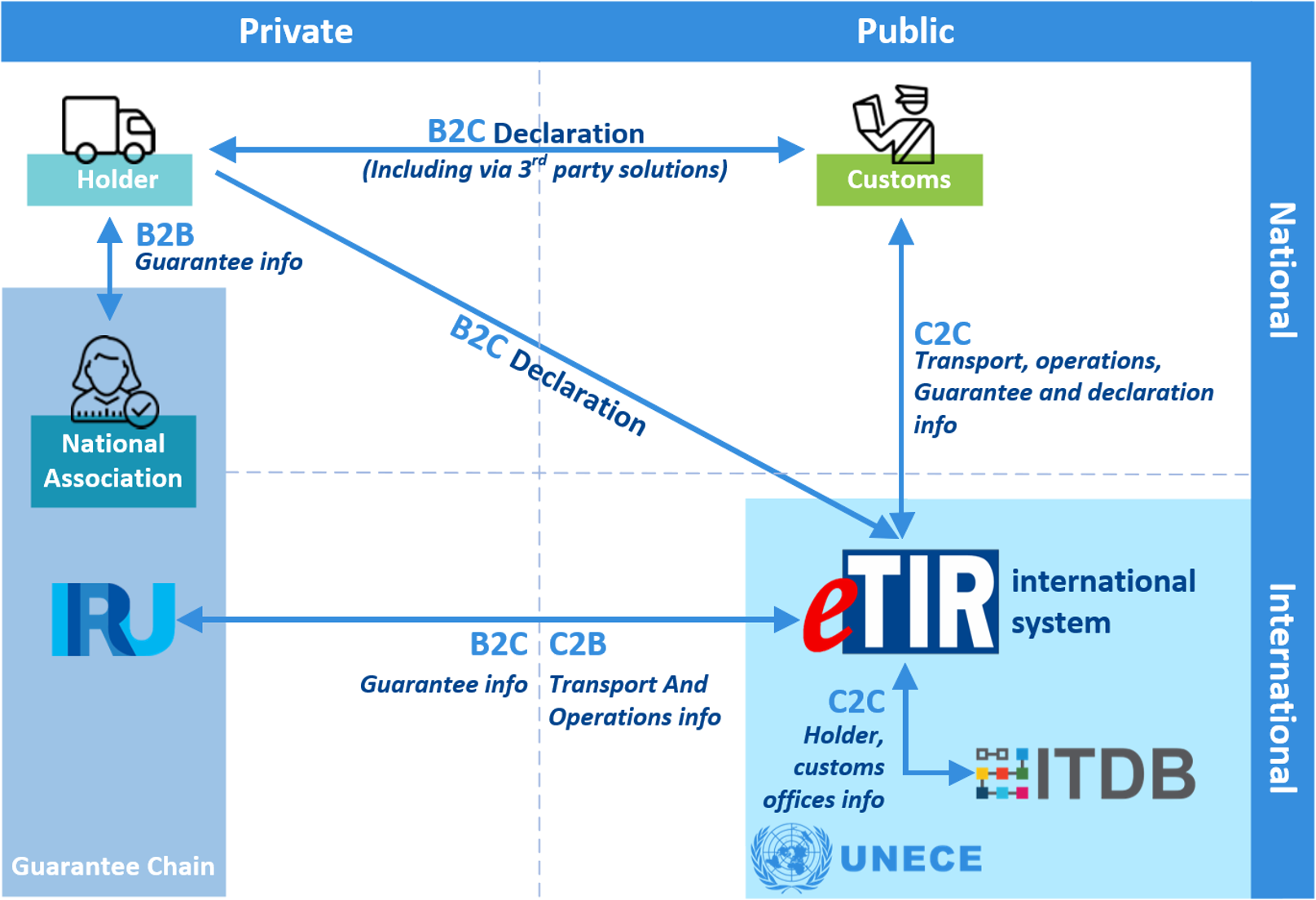eTIR turns borders into bridges
The eTIR INTERNATIONAL SYSTEM turns borders into bridges!
The Contracting Parties to the TIR Convention launched in 2003 the so-called “eTIR Project”, aimed at providing an exchange platform for all actors (Customs authorities, holders and guarantee chains) involved in the TIR system, known as the “eTIR international system”. The eTIR international system aims to ensure the secure exchange of data between national Customs systems related to the international transit of goods, vehicles or containers according to the provisions of the TIR Convention and to allow Customs to manage the data on guarantees, issued by guarantee chains to holders authorized to use the TIR system. The eTIR INTERNATIONAL SYSTEM is a customs to customs application ensuring and guaranteeing that mutual recognition among customs authorities is being achieved while performing the TIR procedure in an electronic environment.

The aim of the eTIR international system is to ensure the secure exchange of data between national customs systems for the international transit of goods, vehicles or containers according to the provisions of the TIR Convention and to allow customs to manage the data on guarantees, issued by guarantee chains to authorized users of the TIR system. The eTIR system will offer benefits to all actors involved in the TIR system. First, it will bring additional security and risk management opportunities, thus reducing the risk of fraud. Second, advanced international cooperation will allow all actors to significantly reduce their administrative burden and to maximize the benefits of integrated supply chain management. Finally, the provision of advance cargo information and the exchange of information in real-time will speed up the TIR procedure.
Example of an eTIR transport
In the eTIR system, a holder first requests a guarantee from a guarantee chain to perform a given TIR transport. If the request is granted, the guarantee chain provides the holder with a guarantee reference number. The guarantee chain then registers the issued guarantee with the eTIR international system.
As a next step, the holder sends a standard advance cargo information message (i.e. all information contained in the declaration) to the Customs authorities of the office of departure, using a national declaration mechanism, allowing them to perform any required risk assessment procedures.
Then, the holder presents vehicle, goods and guarantee reference at the Customs office of departure for the purpose of lodging the declaration, based on the advance cargo information message already available in the national Customs system.
Customs inspect vehicle and goods according to the results of the risk assessment and verify the status of the guarantee with the eTIR international system. If all checks are in order, Customs accept the declaration and forward the relevant TIR transport data (declaration data, results of the checks, seals numbers, etc) to the eTIR international system.
The eTIR international system provides all Customs administrations involved in the TIR transport (according to the itinerary as declared by the holder) with the TIR transport information, thus serving as advance cargo information for the subsequent Customs authorities. The guarantee chain, which has issued the guarantee concerned, will be notified of any change in the status of the guarantee and can consult, at any time, the eTIR international system on the status of guarantees issued by it.
Upon arrival at a consecutive Customs office of entry, the procedure is repeated, based on the advance cargo information available through the eTIR international system and the risk assessment performed by the Customs authorities involved. Specific steps are foreseen in case the TIR transport consists of multiple places of loading or unloading.
Each time the TIR transport reaches a Customs office of exit or destination, the Customs authorities inform the eTIR international system of the termination of the concerned TIR operation4. The same procedure applies for the notification of the discharge of each TIR operation.


